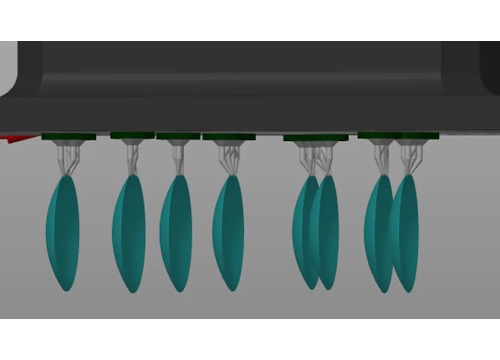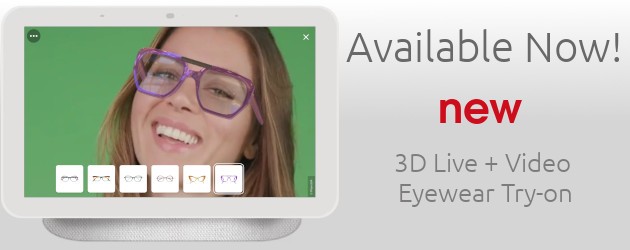Industry News
Revolutionary Contact Lenses To Correct Colour Blindness
 Scientists at Khalifa University in the United Arab Emirates have developed contact lenses that filter light to improve colour blindness. This breakthrough was made possible by using advanced 3D printing technology and a cost-effective dye that makes the lenses much cheaper than previous models.
Scientists at Khalifa University in the United Arab Emirates have developed contact lenses that filter light to improve colour blindness. This breakthrough was made possible by using advanced 3D printing technology and a cost-effective dye that makes the lenses much cheaper than previous models.
Colour blindness is a hereditary condition that affects two out of every 100 people and is more common in men than women. It makes it difficult for people to distinguish colours, shades, or brightness, making everyday activities a challenge. For example, colour-blind people may have trouble selecting food and clothes, identifying transport signals, and detecting changes in skin colour.
The human eye only has photoreceptors for blue, green, and red light, while other colours are detected by a combination of two or more photoreceptors. In colour-blind people, photoreceptors are either missing or defective, leading to an inability to observe certain colours or a distortion from what others would see.
While tinted glasses or contact lenses that absorb light of specific wavelengths can help with colour distinction, they can be expensive and, in some cases, may still prevent patients from passing colour vision tests used to diagnose colour blindness.
To address these limitations, the team used an alternative method to manufacture colour blind contact lenses that maintain high quality and functionality but with decreased production costs.
The scientists used a mix of biocompatible materials that come together in a solid network that retains water called a hydrogel. They also added a pink ink that absorbs light in the problematic wavelengths for red-green colour blindness — the most common form of colour distortion.
To shape the lenses, the team used an advanced 3D-printing technology called mask stereolithography apparatus (MSLA) that produces high-quality items quickly and at low cost. The lenses were found to block light between 525 and 575nm — the range where the pink ink absorbs. Importantly, they demonstrated that the pink lenses preserve this light-filtering property over time, even when stored in water or contact lens solutions commonly used for disposable lenses.
Compared with a commercial model that also helps red-green colour blindness, the pink lenses showed a similar dip in light transmission and water retention, but the key feature is that the pink ink is 700 times cheaper than the dye used in the commercial lenses.
The pink ink also improved the mechanical resistance and the lens’ surface wettability, which is the ability of a liquid to spread over a material’s surface. Better wettability avoids dehydration and buildup of lipids and proteins from tears, which cause blurred vision and discomfort.
The biosafety of the pink lenses was also tested, analyzing if they were toxic to human skin cells and if they had imperfections on the surface that could harm the eye. The lenses were non-toxic for cells in culture and were generally smooth, but some roughness remains at the contact points with the support structures used for printing.
However, there are additional properties like oxygen permeability and protein deposition that need to be tested before conducting clinical trials, according to Ahmed Salih, one of the scientists behind the study.
In conclusion, the development of these lenses is a significant step forward in addressing the challenges faced by colour-blind people. It not only offers a cheaper solution than previous models but also demonstrates that 3D printing technology can be used to create customized lenses that cater to specific visual needs. While further testing is needed, this research provides hope that people with colour blindness will have access to effective and affordable solutions in the future.
The study is published in Macromolecular Materials and Engineering.



